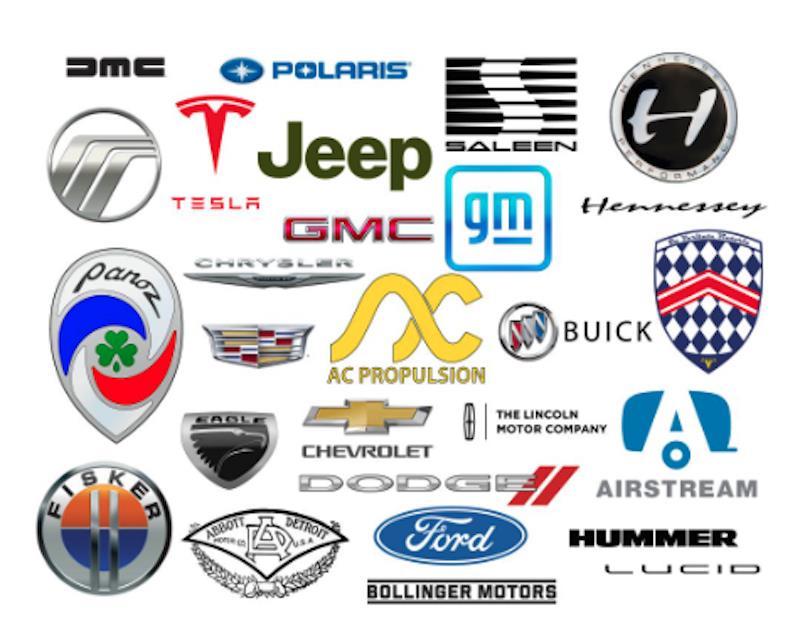(MENAFN- Robotics & Automation News) Features of Car Logos
September 5, 2023 by Mark Allinson Leave a Comment
The automobile industry is not just about engines, speed, and utility. It's also about branding, perception, and the subtle art of communication, all of which are often encapsulated in a single design element: the car logo.
From the prancing horse of Ferrari to Mercedes-Benz's iconic three-pointed star, **car logos** serve as both an immediate identifier and a source of pride. They are symbols, silent but impactful, encapsulating the essence, heritage, and vision of a brand in a single glance.
The History and Significance of Automotive Branding
The automotive industry has come a long way since Karl Benz built the first-ever automobile in the late 19th century.
With time, cars have become more than just a mode of transport; they have become a symbol of status, an extension of one's personality, and a representation of individual tastes and preferences. The brand symbol, or logo, has emerged as a significant aspect of this journey.
In the early days, car logos were often simple, perhaps including only the initials or name of the manufacturer. But as the market expanded and competition grew fiercer, there was a need for companies to differentiate themselves.
Logos began to evolve, encompassing a wider range of elements – shapes, animals, mythological figures, and more. Today, these logos serve varipurposes, from establishing brand identity to conveying a particular emotion or quality.
Aesthetic Appeal vs. Brand Message
A critical aspect of any logo design is aesthetic appeal. Well-designed logos are visually pleasing but also carry a message. Automotive logos are no exception to this rule. They must be eye-catching enough to be easily recognized at a glance and complex enough to encapsulate a brand's identity.
For example, the logo of Audi, a series of four interlinked circles, is aesthetically pleasing but also carries a deeper message. The four circles represent the four founding companies of Auto Union, Audi's predecessor.
Similarly, the aforementioned three-pointed star of Mercedes-Benz is not just a striking design element; it signifies the brand's ambition to dominate land, sea, and air transportation.
While companies like Audi and Mercedes-Benz may use geometric designs, others like Ferrari or Jaguar use animals as their logos, emphasizing attributes like speed, agility, or luxury.
These logos connect on an emotional level, triggering specific feelings and associations that align with the brand's identity.
Black logos are often favored for their versatility and sophistication. They can easily adapt to varibackgrounds and settings, making them a preferred choice for luxury and high-end car brands.
The color black is often associated with luxury, power, and elegance, which is why you will see it being used extensively in the logos of premium automotive companies.
Cultural and Psychological Aspects
The influence of culture and psychology cannot be understated when examining the features of car logos. The symbolism often carries weight that may be influenced by cultural heritage or societal norms.
For example, American car logos like that of Ford or Chevrolet often encompass traditional American values such as durability, reliability, and strength. On the other hand, Japanese brands like Toyota or Honda often aim to convey efficiency and innovation through their logos.
Color psychology is another area that automotive companies carefully consider. Blue logos may signify trust and reliability, while red could evoke feelings of passion and excitement. The color scheme is meticulously selected to align with the brand's messaging strategy.
The Future of Car Logos
In an era of electric vehicles, self-driving cars, and increasing concern for environmental sustainability, what future do car logos have?
As brands pivot or expand their product lines, their logos may also undergo transformations to resonate with changing consumer needs and preferences.
One could argue that logos might become more dynamic and adaptable. With digital displays replacing traditional badges on some models, car logos of the future might incorporate motion, adapt to different driving modes, or even change based on user preferences.
Just as the automobile has evolved over the past century, its most visible brand identifier – the logo – will continue to change and adapt.
To sum up, car logos are a complex interplay of history, aesthetics, psychology, and cultural elements. They serve as the face of the brand, a silent ambassador that communicates a message without uttering a single word.
As the automotive industry continues to evolve, so will the features that make these logos as iconic as the cars they adorn.

















Comments
No comment